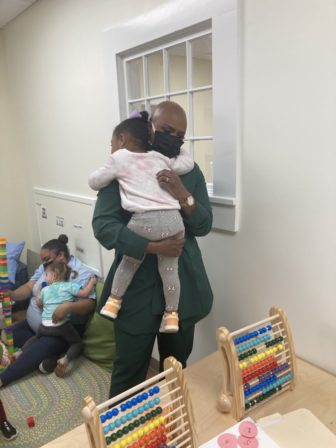Last updated on November 14, 2021
The decision by the Department of Elementary and Secondary Education’s commissioner to only count a portion of the Curley K-8 School’s at-home learning days following a COVID-19 outbreak doesn’t do right by the school community — and the Boston community at large — and ought to be reconsidered.
Boston Public Schools Superintendent Brenda Cassellius announced this past Tuesday, November 9, that the Curley K-8 School would close for 10 days and switch to remote learning due to a proliferation of COVID-19 cases in the school. That day, BPS officials said they had identified 46 cases spread across 21 Curley classrooms. Given the infection spread, the entire school closed on the advice of the Boston Public Health Commission. On Friday, BPS announced another 17 positive cases, bringing the total to at least 63.
This news came on top of BPS announcing that the Manning School in Jamaica Plain had at least 17 positive cases. BPS deemed the Manning School outbreak under control, however, and said it didn’t necessitate closing the school.
When the Curley closure was announced, BPS officials said they did not plan to reopen for in-person learning until November 22. Cassellius acknowledged during a virtual meeting that she was unsure whether the state’s Education Department would count all of the remote learning days as official school days. If not, the Curley School might need to add in-person learning days, perhaps at the end of the school year, to reach the legally required 180 days of instruction.
A few days later, on Friday, WBZ reported that State Education Commissioner Jeffrey Riley had criticized how BPS had handled the outbreak, and also that it had not consulted his office before closing. Riley wrote that he wondered if the school closure could have been “…avoided if progressive interventions recommended by DESE were implemented last week, such as quarantining individual classrooms or grade levels.”
Riley really wants students to be educated in physical school buildings, saying it’s better for their learning and mental well-being. As such, he decided that only four days of remote learning would count toward the required 180 days.
BPS appeared to waver after being chastised by Riley. However, on Saturday, BPS leadership announced it would stick to its plan to continue remote learning until November 22, regardless of the state’s decision. That’s the right decision. Returning the Curley School community to classrooms earlier would have risked more exposures leading to more positive cases — and not just among the Curley School students and the Curley School staff and faculty, who continue to work and do their best to educate children. It would likely affect their families, their friends, and their families and friends, and on and on.
To be sure, there are a lot of questions about how BPS may have failed to protect the Curley K-8 School community. BPS, the state’s biggest school district, should have been following a COVID playbook that laid out precisely how to respond to the situation that came to pass at the Curley School, especially when the district had almost two years to plan for it. Why didn’t leaders notify the community of the many positive cases sooner? Why didn’t it attempt to quarantine individual classrooms? Why didn’t Cassellius already know whether the state would count the remote learning days well before these outbreaks occurred?
At the same time, one wonders, if BPS had consulted the state and decided to quarantine individual classrooms or grade levels, would all of those students’ days of remote learning have counted toward the mandatory 180? That Riley might have been willing to support parts of the student population learning remotely but not the entire school points to a capriciousness in his decision making.
If Riley truly values the well-being of students, staff, faculty and the community, he wouldn’t force this decision upon BPS. Yes, BPS was seemingly not prepared and dropped the ball in several ways. But Riley is hoisting a lot of mental stress, and the threat of a deadly virus, upon the community. He ought to allow all the Curley School’s remote learning days to count toward the required 180. Education is about learning. Learning requires being able to adapt and change one’s mind.
BPS did remote learning all last year. It may not be desirable compared to in-person learning, but exceptions must be made, especially in the midst of an international health crisis. If that means more days of school need to be added at the end of the year, so be it. Hopefully, the virus will be more under control by then.







